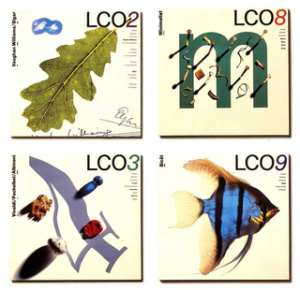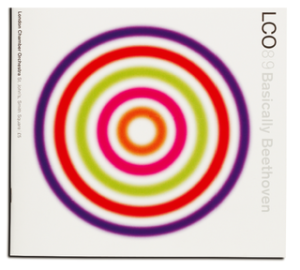This week I attended the 4 Designers Conference in London and as with previous years I’ve attended the speakers chosen were inspiring and offered practical relevant advice. The conference Chairman and founder of 4 designers, Patrick Baglee was really interesting; on this occasion he reveled a little about his background in the design industry and how he entered the industry (I had been a little naive and not conducted my research on his career) I was fascinated to discover his early roots stem from studying learning processes… This is an area which touches on my dissertation subject which I have just finished, and is the basis for my next practical project. I decided to approach Patrick to ask advice and found him to be an extremely pleasant gentleman who offered to assist me should I require any help. Thank you Patrick, this is very much appreciated.
A little about Patrick’s design career:
Patrick Baglee is Director of Creative Strategy at Navyblue, a strategic international brand development agency with offices in London, Edinburgh and Budapest. Before joining Navyblue he spent two years as Executive Creative Director at EHS Brann, one of Europe’s largest direct marketing agencies.
He has written off, on, through and above the line for print, digital and TV and worked with Audi, British Gas, Barclays, Cambridge University Press, COI, Diageo, Diesel, The FA, Gilbert & George and UK Trade & Investment. His writing on design and advertising has appeared in eye, Campaign, Grafik, Graphis, Creative Review and u&lc. He is the former Chair of The Typographic Circle, and Founder of 4Designers, an annual student conference held in London and New York.
The first speakers of the day were Stuart Price & Chris Jefferys from Manchester based company ‘Thoughtful’. Thoughtful was set up by 3 former senior designers from ‘The Chase’ Stuart, Chris and James Graham. I really enjoyed the presentation from Stuart and Chris, they truly appeared to understand people and how to connect. The presentation was insightful and delivered in an professional yet amusing fashion which perfectly fitted the audience and kept everyone interested. Thoughtful has been running for 3 years. The presentation started with Inspiration;
‘The Mill’ Logo:
Daniel Eatock; Big Brother:
And of course Daniel Eatock’s Alarm Dance 3.
The best packaging:
Many of the Inspirational people who Thoughtful admire are personal favorites of mine and who’s work I’m very much aquatinted with:
Chris Cunningham
Jonathan Glazer – Nick Cave’s ‘‘ one of my all time favourite music videos (if there was a piece of work that you wished you had been responsible for this would probably be mine).
The presentation progressed and the conversation was directed to the idea of marrying two unrelated items to give an interesting take on a design idea.
A video clip of an early Oasis interview was shown to highlight the importance of passion for your work. It has to be said that even if Liam Gallager can be consued as arrogant at times you have to admire his sheer self confidence and belief for what he does.
Various innovative designs were shown but my favourite has to be the hamster wheel paper shredder:
Bic Cutlery:
And Rice Baby:
Various tips to the creative industry were offered:
- Keep interested
- You cannot communicate
- Keep scrapbooks of everything.
The latter part of the presentation was turned over to interviews with some of the most prestigious names in the industry to offer their advice to students, fantastic advice.
- Can you learn something from the place your working.
- Don’t assume that your work can effect the rest of your life.
Greg Quinton – The Partners
Persistence – Earn it … To do great work.
Micheal Wolff
- Inquisitiveness
- Never fear your imagination.
Jonathan Baldwin – Dundee University
Connections – What could design have to do with this?
Adrian Shaughnessy
- Be prepared to learn
- Preparation Prevents Piss Poor Performance.
James Corazzo
NEVER, NEVER, NEVER give up.
Michael Johnson – Johnson Banks
- Click through portfolio site
- PDF under 5MB.
Lise Brian – The Chase
Lise started the presentation from a very personal angle of her own experiences in the design industry; from early influences and interests, her studies and subsequent placement and successful career with Ben Casey at the ‘The Chase’. The presentation used many examples of Lise’s work and this formed the narrative to her very practical advice about how to approach an agency. Just some of the tips given were (Lise explained that many of the points were common sense yet many people fell at these hurdles):
- Get the name right and spell it correctly.
- Don’t attach too many files to emails.
- Follow any emails up with calls.
- Be nice to the receptionist (they are all close in the office and do talk).
- Try not to be too nervous.
- Know something about where your going.
- Know something about where you want to be.
- Ask about placements.
- Turn up unannounced.
- If in a placement don’t forget to ask ‘Can I help’.
With regards to your portfolio Lise offered some helpful advice:
- If you don’t like it take it out or redo it.
- Have a good mix of work.
- Keep your folder spotless.
- Treat your portfolio like a job.
- Mock ups are lovely.
- Don’t ever put foam board in your folder.
- How much time do you have?
- When given advice don’t take it to heart.
- Practice talking.
- Start & Finish with your strongest work.
David Kester – Design Council
David was appointed Chief Executive of the Design Council in May 2003. He has refocused the organisation as the national strategic body for design, leading central government policies and regional programmes that strengthen competitiveness, drive innovation and support growth in the creative economy.
Prior to the Design Council, David has held senior leadership roles within business, design and the environmental sector including nine years as Chief Executive of D&AD and four years at the pressure group Friends of the Earth. His tenure at the design and advertising organisation, D&AD, is associated with a turnaround in performance and reputation, including internationalising its award scheme and building its education programmes.
He is a council member of the Royal College of Art and The Royal Society of Arts, a trustee of the Kingston Rose Theatre, board member of the Design Business Association and regular commentator and advisor to government on the creative economy, enterprise and innovation.
David started his presentation with statists of what the students will be facing when entering the industry:
- The UK has the largest design industry in Europe.
- It’s a 11 billion £ sector.
David moved the presentation onto innovation lead by design, he used two examples of this. The first example was a small easily identifiable problem and uncomplicated to rectify:
A Doctor who had designed and made medical equipment (he held all the patents no other parties were involved) but no body was interested in buying the product. The problem was identified as an anesthetic issue the equipment was redesigned and relaunched – problem solved (extremely successful after a redesign).
The second example was much more complex. The client was the large employer; NHS, the issue to be tackled MRAS C. difficle. The desision to use design right at the beginning was taken. Students from RCA were enlisted to help identify and discover unique insights. The areas highlighted included the bedside area being cluttered and hard to clean effectively, so students designed new stations for the bedside areas in addition to other avenues that had been explored.
David discussed the design process as a double diamond shape in which there are four specific phases; discovering, developing, defining and delivering. This diagram (which is shown below) is a framework to think about your project and its process. The double diamond shape is generic throughout projects though can be stretched and morphed depending on the phase a project is concentrating on.
David explained that very often in the design industry the last thing we do is design. This is something I personally have discovered during the last 2 and half years of study at art school. David ended the presentation with some interesting comments:
- Creativity – we ALL have it (everyone).
- Innovation – the commercial sector.
- Design – the link.
Simon Manchipp, Gary Holt & David Law started the presentation with the engineer’s project triangle:
They explained how you can achieve two but never three of the options. Their advice centered on ‘Don’t be Boring’ . They outlined the 3 things which are important to SomeOne:
- Do good work
- Have fun
- Make money to continue.
But ALL must be carried out with an opinion.
1. They explained what they called the upside down process:
- the creative first stage / pitch
- creative adjustments
- detailed design
- artwork & guidelines
2. Continuing to explain that ‘Branding’ is a business. Know that business, it’s homework that will NEVER be wasted.
3. Be creative everywhere including in the deals:
- Fee
- Equity
- Exchange
Do good work / DO GREAT WORK.
The presentation continued to discuss the world of ‘Branding’ and if logos are now a passed life? They are very much embracing the brand world as opposed to logos – using colour, type and identity not a logo more a brand experience. But I personally still consider this to be a logo, am I wrong? Have I misunderstood? I appreciate that it is not the common logo idea image or image/type but it is still an identity of a company something that makes them identifiable.
Mike, I found extremely interesting for many reasons in his opening speech he reveled that he is indeed very dyslexic something that I’m interested in as I have spoken about earlier in this post and highlighted his highly visual strengths.
Mike took the audience on a journey through his career starting with how he first became interested in the industry. One of his first tools in the trade was Josef Muller-Brockmann’s ‘ The Graphic Artist and His Design Problems” (1961):
His early career in publishing and many of his designs including work for the London Chamber Orchestra (LCO) and English National Opera (ENO):
Mike broke logo for ENO down and explained how he had decided to go with the final decision. It was really interesting and I loved this element of his presentation idea was simple and effective (the best ones always are) a typographic representation of an operatic singer, the image shown was Pavarotti. The ‘O’ is the singing mouth, the ‘E’ and ‘N’ are the eyes (shown in different weights) whether this is to add emotion or character I’m not sure but I like it, it works.
Many samples of Mike’s inspirational work was shown; but one of my favourite pieces is the classic album covers stamps:
The presentation continued with 12 words from Mike to help with our journey:
LOOK: really see.
READ: the copy your designing with.
IDEAS: always endure, styles fade.
HISTORY: absorb everything.
PASSION: it’s infectious.
CURIOSITY: stay curious.
NO: be persuasive and push.
RULES: learn and then break.
WORDS: some times words are more fruitful.
VOICE: articulate, never underestimate.
EGO: don’t grab all the lime light.
REJECTION: learn from it.
To all the designers that took time out from their very busy schedules to pass on their words of wisdom and share their experiences of the industry thank you. I took an awful lot away from the experience and appreciated your time and honesty.
Filed under: 4 Designers


















